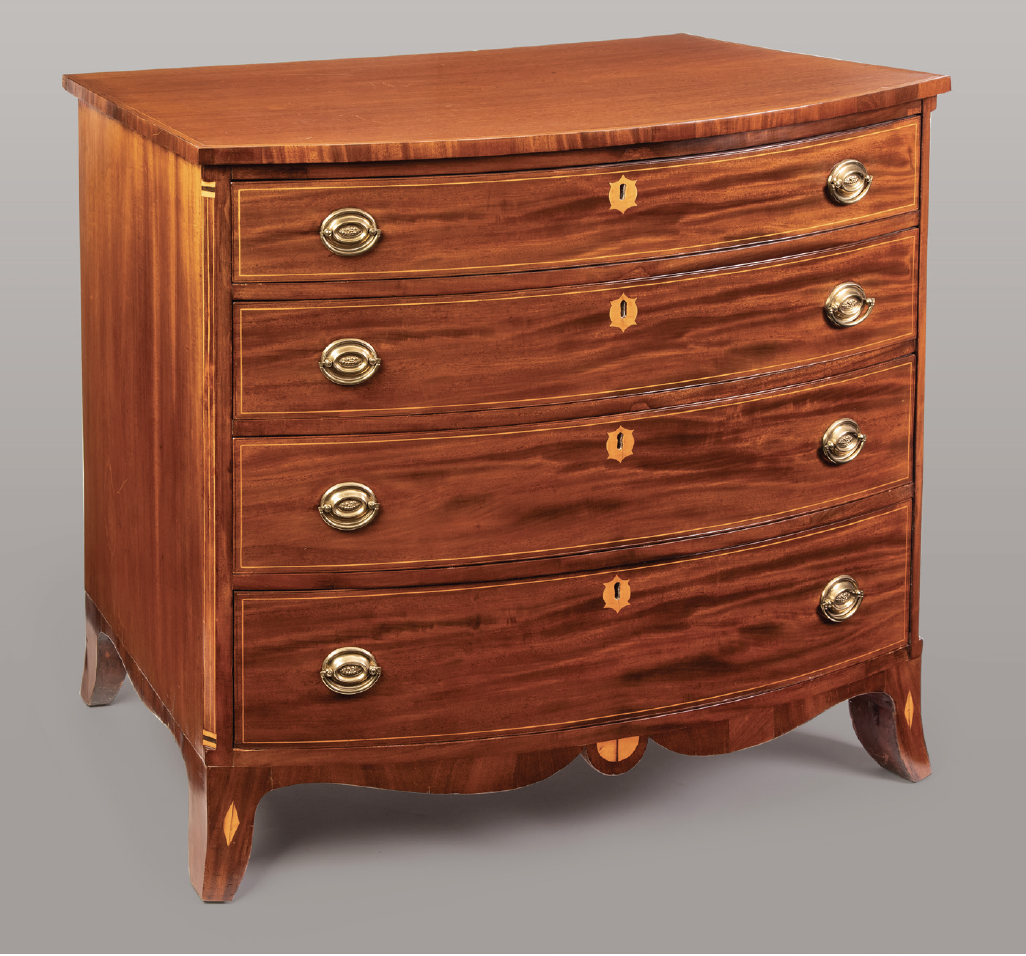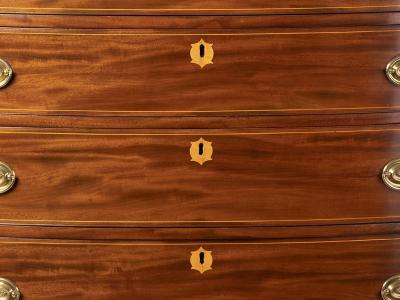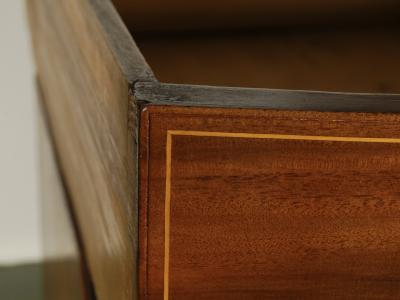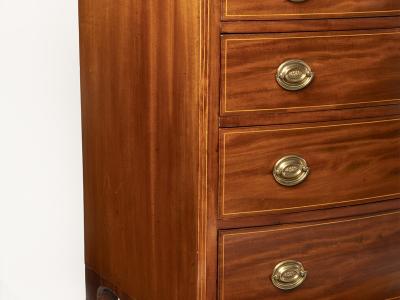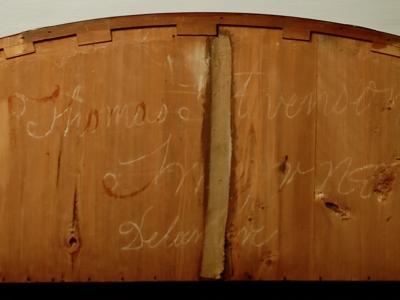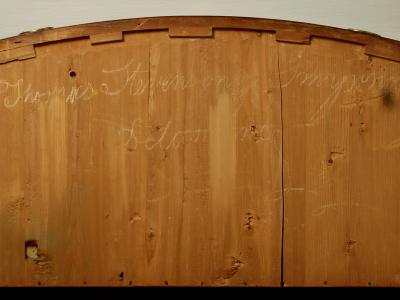Chest of four drawers
Smyrna, Delaware
1804-1808
Maker
Thomas Stevenson (1787–1865) and James McDowell Sr. (working c. 1785–1836)
Measurements
34 1/2 in x 38 7/8 in x 23 1/8 in
Materials
Mahogany, light and dark wood inlays; tulip poplar (drawer sides, backboards), white cedar (laminated drawer fronts, bottoms, and backs), hard pine (drawer blades, nearly full dustboards)
Credit Line
Historic Odessa Foundation, gift of Sara Corbit Reese Pryor
Accession Number
1974.56
Inscription
“Tho. McDowell / March 18 1808 / JANY 20 1804” is written in pencil on the underside of the second drawer; “Thomas Stevenson / Smyrna / Delaware” is in chalk on the underside of the third drawer; “Thomas Stevenson Smyrna / Delaware” is in chalk on the underside of the bottom drawer. A detailed history of “Sarah Clark Corbit’s bureau” in ink on thick paper stock was taped to the chest back until 1985. The paper record is now missing but the text was recorded in the Winterthur accession record. The brasses have “H•J” stamped into the back of the bails
Condition Notes
Cosmetic issues were addressed in a 1985 Winterthur restoration.
Provenance
Identified in accession records as “Sara Clark Corbit’s bureau,” this chest was likely owned initially by her mother, Mary Clark (1789–1814) of Smyrna. Mary married Pennell Corbit in 1807 and may have acquired the chest about that time. It descended from Mary to Sara(h) (1810–1871), to Mary Clark Higgins (1847–1909), to Sara Clark Corbit (1871–1952), to Harriet Hurd Curtis (1903–1971), to the donor.
Comments
This bowfront chest of four graduated drawers with outward-flaring “French” feet is the key document defining the work of Thomas Stevenson and James McDowell Sr., the progenitors of a notable shop and school of furniture-making that originated in Smyrna, Delaware. The chest displays their distinctive ornaments, namely “terrapin” or turtle escutcheons, inlaid columns on chamfered case corners with three alternating light and dark bands at the top and bottom, and inlaid half-rounds and diamonds, each partially colored by singeing the pieces in hot sand beds. The drawer fronts also incorporate another distinguishing feature, that of scratch-beads cut into the edges of the veneered fronts, rather than cockbeading.
Bibliography
“Delaware Furniture from Delaware Houses,” exhibition pamphlet, Wilmington Society of the Fine Arts, April 5–30, 1950, cover.
Sweeney, “Corbit-Sharp House,” 881, pl. IX.
Hotchkiss, “Odessa Furniture Returns,” 103.
Waters, Plain and Ornamental, cat. 16.
Zimmerman, A Storied Past, 144-145.
